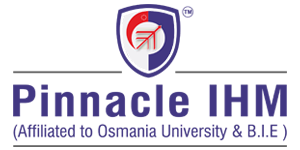Introduction
Niacin (also known as B3) is a water-soluble B vitamin. Niacin is naturally occurring in many foods, added to some food products, and available as a dietary supplement.
NAD is also converted into another active form, nicotinamide adenine dinucleotide phosphate (NADP), in all tissues except skeletal muscle in the form of nicotinic acid and nicotinamide. The body can also convert tryptophan, an amino acid, into nicotinamide. Niacin is water-soluble, so excess amounts that the body does not require are excreted in the urine. Niacin aids in the conversion of nutrients into energy, the production of cholesterol and fats, the formation and repair of DNA, and the activity of antioxidants.
- Niacinamide (also known as nicotinic acid).
- Both forms can be found in foods and supplements (1Trusted Source).
Niacin’s primary function in your body is to produce the coenzymes nicotinamide adenine dinucleotide (NAD) and nicotinamide adenine dinucleotide phosphate (NADP), which are involved in over 400 biochemical reactions in your body, the majority of which are related to obtaining energy from the food you eat.
Deficiency
Niacin deficiency is uncommon in the United States and other industrialised countries because it is readily absorbed from most foods (with the exception of some cereal grains, where niacin is bound to its fibres, reducing absorption) and is added to many foods and multivitamins. A severe niacin deficiency causes pellagra, a condition characterised by a dark, sometimes scaly rash on sun-exposed skin areas, bright red tongue, and constipation/diarrhea. Other signs of severe niacin deficiency are:
- Depression
- Headache
- Fatigue
- Memory loss.
- Hallucinations
- Vomiting
- Skin rash or discoloration
- Constipation or diarrhea
However, deficiency is extremely rare in most Western countries. Malnourished people are the most vulnerable, which can be caused by HIV/AIDS, anorexia nervosa, liver failure, alcoholism, or other medical problems, as well as poverty.
Severe niacin deficiency, also known as pellagra, is most common in developing countries with limited dietary diversity. It can be treated with niacinamide supplements.
Toxicity
Toxicity from eating niacin-containing foods is uncommon, but it can occur after long-term use of high-dose supplements. A reddened skin flush with itching or tingling on the face, arms, and chest is a common symptom. Flushing is more common when taking high-dose supplements containing nicotinic acid rather than nicotinamide. Niacin taken in large doses as supplements may also raise uric acid levels, which are a risk factor for gout.
Other signs:
. Dizziness
. Low blood pressure.
. Fatigue
. Headache
. An upset stomach
. Nausea
. Blurred vision
. Impaired glucose tolerance and liver inflammation in severe cases (at very high doses of 3,000-9,000 mg daily for several months/years).
Supplements –
Niacin is available in supplements as nicotinic acid or nicotinamide. Supplement amounts can occasionally exceed the RDA, resulting in unpleasant flushing side effects. Niacin supplements are also available as a prescription medicine to treat high cholesterol; these typically come in an extended release form of nicotinic acid, which allows for slower, more gradual absorption and prevents flushing. Because of the extremely high doses of nicotinic acid required (up to 2,000 mg per day), this supplement should only be used under the supervision of a physician.
Carcinoid Syndrome
This is a disease that causes slow-growing cancer cells in the gut to release a chemical known as serotonin. The syndrome converts tryptophan in the diet into serotonin rather than niacin, increasing the risk of low niacin.
Chronic alcoholism
Excessive alcohol consumption reduces nutrient absorption, particularly water-soluble vitamins, including those in the B family.
Food Resources
A niacin deficiency is uncommon because it is found in many foods, both animal and plant.
. Red meat: beef, beef liver, and pork
. Poultry Fish
. Brown rice, fortified cereals and breads
. Nuts and seeds
. Legumes
. Bananas
Special diets
. Healthy Eating Food Freedom Conditions
. Feel Good Food Products.
. Vitamins and Supplements
. Sustainability
. Weight Management
Nutrition: 5 Science-Based Benefits of Niacin (Vitamin B3)
Niacin is a type of B vitamin that benefits your entire body, including your brain and skin. It can be obtained from meat, fish, and nuts, as well as through supplements.
Niacin or vitamin B3, is an important nutrient. Indeed, it is required for the proper functioning of every organ in your body.
Niacin, taken as a supplement, may help lower cholesterol, relieve arthritis, and improve brain function, among other benefits.
Diets are limited
People with limited food variety and quantity, such as those living in poverty or who are very ill and unable to eat a balanced diet, are at a higher risk.
5 Health Benefits Of Niacin
- Improve Blood Fat Levels
- May Reduce Blood Pressure
- May Helps Treat Type 1 Diabetes
- Boosts Brain Function
- Improve Skin Health
Recommendation Dietary Allowance (RDA)
For niacin is milligrams (mg) of niacin equivalents (NE). One NE equals one milligrams of niacin or 60 milligrams of tryptophan. The Recommended Dietary Allowance (RDA) for adults 19 and older is 16 mg NE for men, 14 mg NE for women, 18 mg NE for pregnant women, and 17 mg NE for lactating women.
The Tolerable Upper Intake Level is the highest daily intake that is unlikely to have a negative impact on health. The upper limit for niacin for all adults aged 19 and up is 35 milligrams.
To Get More information:
- Visit: https://pinnacleihm.com
- Phone No:+91 92465 28830 | +91 98665 38830
- Email: info@pinnacleihm.com
- Address:#12-1-59/NR, Goods Shed Road,Behind Registration Office, Moosapet, Hyderabad-500018
- Maps: Pinnacle Institute of Hotel Management & Catering Technology

